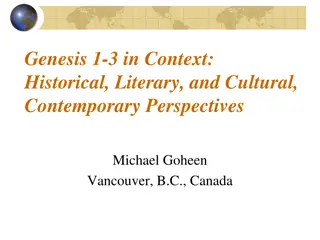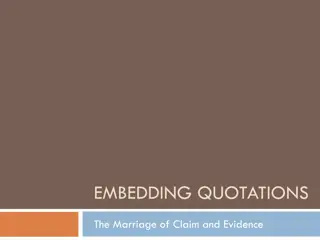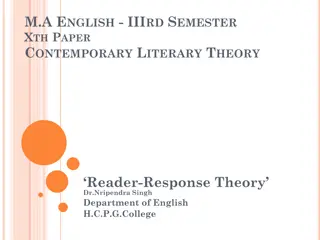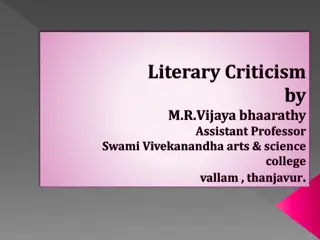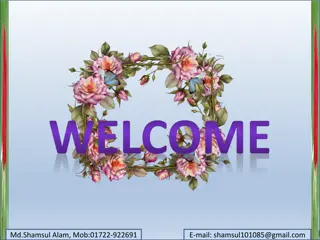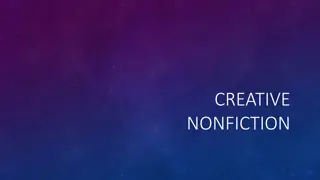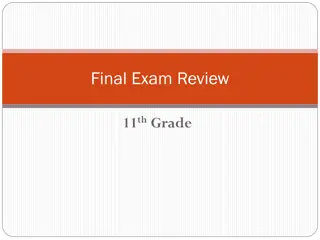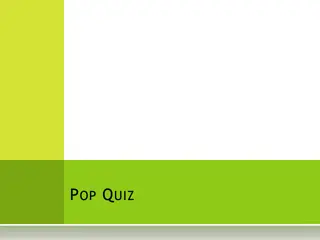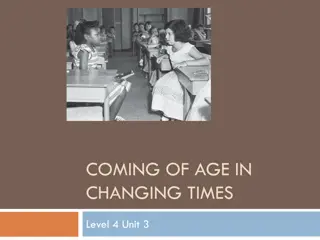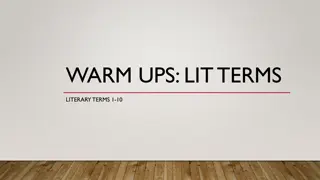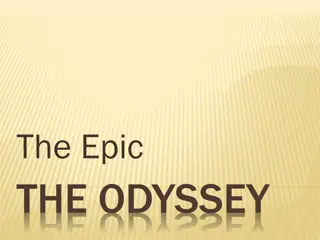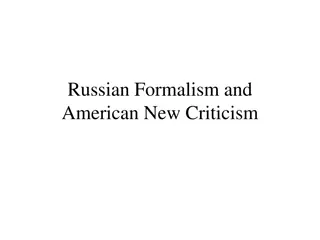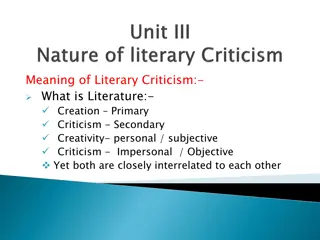Enhancing Literary Understanding: A Journey with Md. Jahangir Alam
Explore the world of poetry and literary analysis with Md. Jahangir Alam, a Senior Assistant Teacher at Majhira Model High School. Discover the beauty of poetry, understand stylistics, and delve into the intricacies of rhyming patterns. Gain insight into concepts like stanza, word patterns, and the art of comparison in literature. Join this educational journey to appreciate the artistry of language and literary expression.
Download Presentation

Please find below an Image/Link to download the presentation.
The content on the website is provided AS IS for your information and personal use only. It may not be sold, licensed, or shared on other websites without obtaining consent from the author.If you encounter any issues during the download, it is possible that the publisher has removed the file from their server.
You are allowed to download the files provided on this website for personal or commercial use, subject to the condition that they are used lawfully. All files are the property of their respective owners.
The content on the website is provided AS IS for your information and personal use only. It may not be sold, licensed, or shared on other websites without obtaining consent from the author.
E N D
Presentation Transcript
Md. Jahangir Alam, Senior Assistant teacher, Majhira Model High School, Shajahanpur, Bogura. Mob: 01719-944601
Identity Identity Md. Jahangir Alam Senior teacher (Eng) Majhira Model High School Shajahanpur, Bogura. Email: alam2014jahangir@gmail.com Mobil: 01719-944601 Class: English Class: viii Date: 22/01/2024 Md. Jahangir Alam, Senior Assistant teacher, Majhira Model High School, Shajahanpur, Bogura. Mob: 01719-944601
Md. Jahangir Alam, Senior Assistant teacher, Majhira Model High School, Shajahanpur, Bogura. Mob: 01719-944601
Our Todays Experience is- Beauty in Poetry Beauty in Poetry EXPERIMENTAL LEARNING CYCLE EXPERIMENTAL LEARNING CYCLE 3. Abstract Conceptualization 3. Abstract Conceptualization Md. Jahangir Alam, Senior Assistant teacher, Majhira Model High School, Shajahanpur, Bogura. Mob: 01719-944601
Learning Competency Competency 1: Ability to appreciate the use of stylistics and ornamentation in a literary text. At the end of the experience, we will be able to- make comparison between two persons or things. Md. Jahangir Alam, Senior Assistant teacher, Majhira Model High School, Shajahanpur, Bogura. Mob: 01719-944601
Let us introduce with some key words. Rhyme Word Poem Meaning Babies like to recite rhyme. Sentence Md. Jahangir Alam, Senior Assistant teacher, Majhira Model High School, Shajahanpur, Bogura. Mob: 01719-944601
Stanza Word Section Meaning Sentence There are four stanzas in the poem. Md. Jahangir Alam, Senior Assistant teacher, Majhira Model High School, Shajahanpur, Bogura. Mob: 01719-944601
Word Pattern Design Meaning Sentence The pattern of the poem is ABABBA. Md. Jahangir Alam, Senior Assistant teacher, Majhira Model High School, Shajahanpur, Bogura. Mob: 01719-944601
1.3.5 Now, read a note on The Rhyming Pattern of a Poem and explore the rhyming patterns of the poem True Royalty. Note You have already learned that Rhyming is one of the notable features of a poem. Here, we will learn how to identify the rhyming pattern of a poem. The rhyming pattern of a poem is called Rhyme Scheme. A rhyme scheme refers to the sounds that repeat at the end of a line or stanza. A rhyme scheme can change line by line, stanza by stanza, or continue throughout a poem. There are several rhyme schemes used in poetry. Some of the most popular rhyme schemes are- Md. Jahangir Alam, Senior Assistant teacher, Majhira Model High School, Shajahanpur, Bogura. Mob: 01719-944601
1 1. .3 3. .5 5 Now, the the rhyming rhyming patterns Now, read read a a note patterns of of the note on on The The Rhyming Rhyming Pattern the poem poem True True Royalty Pattern of of a a Poem Royalty. . Poem and and explore explore Alternate Rhyme Pattern: Here, the first and third- lines rhyme at the end, and the second- and fourth-lines rhyme at the end following the pattern ABAB for each stanza. For example: Bring me my Bow of burning gold: Bring me my arrows of desire: Bring me my Spear: O clouds unfold! Bring me my Chariot of fire! A B A B Here, the poet uses two different end sounds in lines 1-4. The first- and third-lines rhyme with gold and unfold, with the second and fourth lines rhyming with the words desire and fire. Ballad: It contains three stanzas with the rhyme pattern of ABABBCBC followed by BCBC . Monorhyme: Here, every line of a poem uses the same rhyme pattern. Md. Jahangir Alam, Senior Assistant teacher, Majhira Model High School, Shajahanpur, Bogura. Mob: 01719-944601
To explore the rhyming pattern of the poem, first, read the poem carefully. Then, check and write the ending sounds of each verse/line in the blank spaces at the end of every line. Later, check your answers in pairs/groups. Stanza Stanza- -1 is done for you. 1 is done for you. Stanza-1 There was never a Queen like Balki__s, [the ending sound of this verse is /s/.] A From here to the wide world s en_____d_; B But Balkis talked to a butterfl_____y_ C As you would talk to a frien_____d_. D So, the ending sounds of stanza-1 looks like - Stanza - 1 Verse/line 1 .. s Verse/line 2 .. d Verse/line 3 .. y Verse/line 4 .. d Md. Jahangir Alam, Senior Assistant teacher, Majhira Model High School, Shajahanpur, Bogura. Mob: 01719-944601
To explore the rhyming pattern of the poem, first, read the poem carefully. Then, check and write the ending sounds of each verse/line in the blank spaces at the end of every line. Later, check your answers in pairs/groups. Now notice -at the beginning of the verse, the name of the rhyming pattern is written. As Verse 1 is named A (ending sound s), Verse 2 is named B (ending sound d), Verse 3 is named C (ending sound y), and Verse 4 is named B (ending sound d). Finally, we can say that the rhyming pattern of the first stanza is ABCB PAIR/GROUP WORK PAIR/GROUP WORK Md. Jahangir Alam, Senior Assistant teacher, Majhira Model High School, Shajahanpur, Bogura. Mob: 01719-944601
To explore the rhyming pattern of the poem, first, read the poem carefully. Then, check and write the ending sounds of each verse/line in the blank spaces at the end of every line. Later, check your answers in pairs/groups. Now, it s your turn to identify the rhyming patterns of the rest two stanzas. Later, share them with the whole class. Stanza-2 There was never a King like Solomon______, D Not since the world began_____; E But Solomon talked to a butterfly_______ F As a man would talk to a man______. E PAIR/GROUP WORK PAIR/GROUP WORK The rhyming pattern is written.As Verse 1 is named D(ending sound n), Verse 2 is named E (ending sound n), Verse 3 is named F(ending sound e), and Verse 4 is named E (ending sound n). Finally, we can say that the rhyming pattern of the first stanza is DEFE Md. Jahangir Alam, Senior Assistant teacher, Majhira Model High School, Shajahanpur, Bogura. Mob: 01719-944601
To explore the rhyming pattern of the poem, first, read the poem carefully. Then, check and write the ending sounds of each verse/line in the blank spaces at the end of every line. Later, check your answers in pairs/groups. Now, it s your turn to identify the rhyming patterns of the rest two stanzas. Later, share them with the whole class. Stanza-3 She was Queen of Sabae_________ G And he was Asia s Lord_______ H But they both of em talked to butterflies_______ I When they took their walks abroad______. H The rhyming pattern is written.As Verse 1 is named G(ending sound a), Verse 2 is named H (ending sound d), Verse 3 is named I (ending sound s), and Verse 4 is named H (ending sound d). Finally, we can say that the rhyming pattern of the first stanza is GHIH Md. Jahangir Alam, Senior Assistant teacher, Majhira Model High School, Shajahanpur, Bogura. Mob: 01719-944601
Thank you Thank you Md. Jahangir Alam, Senior Assistant teacher, Majhira Model High School, Shajahanpur, Bogura. Mob: 01719-944601








